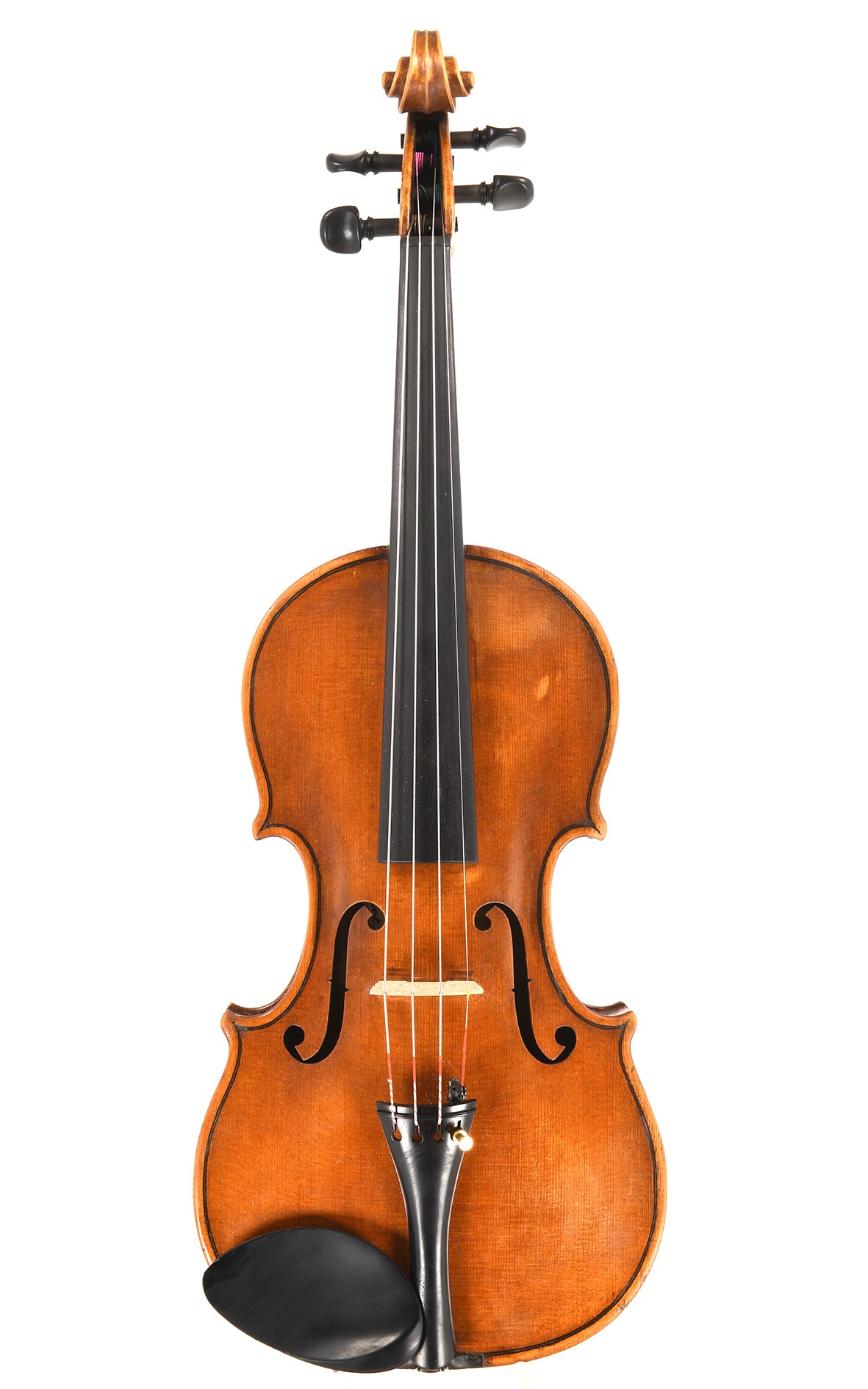Violin by Ernst Grah, Solingen 1924
With this violin from 1924, Ernst Grah created a promising preview of his art before beginning his main oeuvre in Berlin, an experimental body of work which never reached its full fruition because Grah fled from the Nazis and was murdered under the Great Purge of the Stalinist regime.
In the oeuvre of luthier Ernst Grah, this violin – an early instrument from 1924 –...
With this violin from 1924, Ernst Grah created a promising preview of his art before beginning his main oeuvre in Berlin, an experimental body of work which never reached its full fruition because Grah fled from the Nazis and was murdered under the Great Purge of the Stalinist regime.
In the oeuvre of luthier Ernst Grah, this violin – an early instrument from 1924 – reflects the impressive talent and ambition which Grah demonstrated within a mere two years from the time when he turned away from the trade he learned, scissor grinding, and turned towards violin making, the business he inherited from his father. His enthusiasm for his new path was tempestuous and inspired by a deeply-rooted interest in the materials and techniques of the craft. And this sentiment appears to have found its way into the striking aesthetic of this violin, which he crafted with the greatest of care. Its deep fluting and accentuated edges are a magnificent complement to the purfling drawn far into the beesting corners and an emphatically large scroll, all of which highlight the well-chosen tone woods under a thin coat of orange-brownish varnish. Grah's confident skill is apparent in the fine-grain spruce of the top and the exceptionally lovely deep-flamed maple of the two-piece; this violin hints at the sophisticated experiments he would later pursue during his time in Berlin, a period in which he collaborated with scientists to research the ideal vibrations of the violin body. A communist, Grah later fled Nazi Germany and worked at the Institute of Civil Aviation in Moscow. The extent to which his studies of the violin’s physics influenced his work in Russia is not known. Murdered on 31 August 1937 by Soviet intelligence, Ernst Grah's biography alone makes him a truly exceptional figure in the history of German violin making, even though he left behind only a very few instruments. The violin presented here attests to his relevance as an artisan; it bears his original handwritten label and is compelling for both historic and musical reasons. Having been set up and made ready to play
- Inventory no.
- 5805
- Maker
- Ernst Grah
- Provenance
- Solingen
- Year
- 1924
- Length of back
- 35.8 cm





